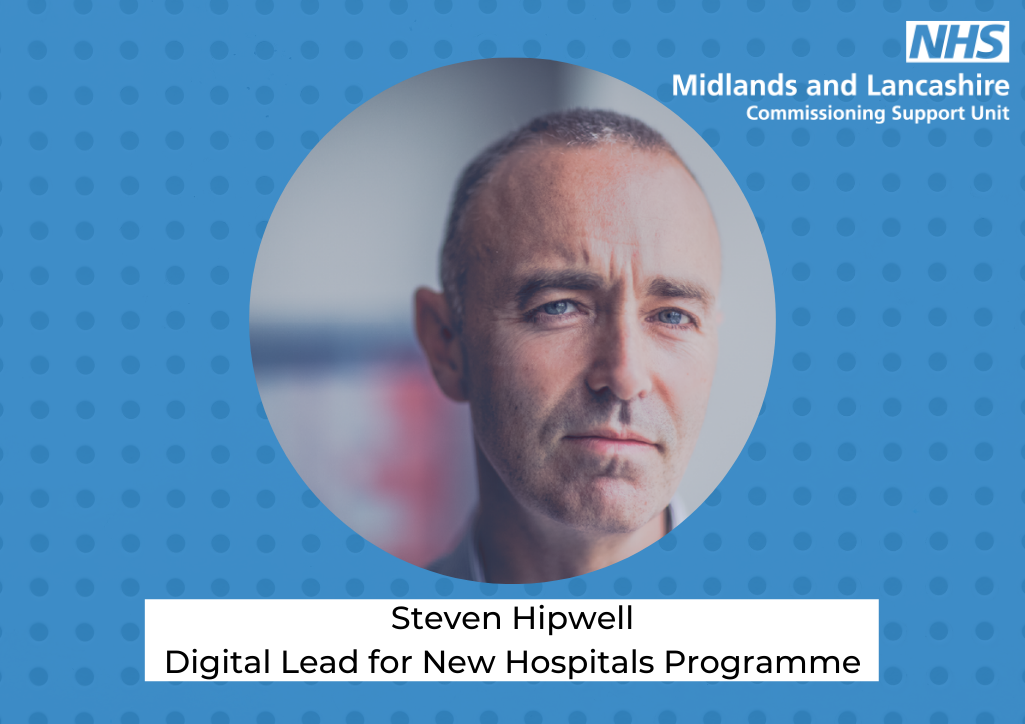Our business intelligence experts helped the Lancashire and South Cumbria COVID-19 Vaccination Programme to provide an efficient and equitable service.
We used local GP systems and national sources of data to fashion datasets providing maximum analytical value; constructed detailed planning tools to permit complex scenario modelling with clear and actionable outputs; produced operational and performance reports relating to various aspects of the programme; provided swift and effective responses to queries at a local, regional and national level, as well as sharing best practice in business intelligence.
This helped stakeholders make data-driven decisions in key areas of operational delivery throughout the rollout. Access to detailed and highly adaptive insight contributed to achieving many of the vaccination programme’s core objectives.
In particular, the daily Situation Report provided unparalleled access to information on site activity and population uptake across the health system. It enabled leaders to closely monitor programme delivery and the impact of their decisions, and to respond proactively to operational challenges as and when they arose.
Similarly, we used data on GP systems and existing data on our established business intelligence platform to produce reports which were invaluable tools in facilitating ad hoc deep-dive analyses of vaccination uptake across a diverse geography. They also supported wider system work around population health management and the reduction of health inequalities.
Innovative booking system reaches milestone
UBook, the resource-booking system designed by NHS Midlands and Lancashire Commissioning Support Unit, has just signed its 20th customer.
Many NHS organisations have traditionally reserved rooms, desks and parking spaces via a combination of spreadsheets, paper diaries and Outlook calendars. Staff often had to call multiple sites to locate a suitable room, and trying to change or trace a booking was difficult.
With UBook, staff can reserve meeting rooms, clinical rooms, hot desks, zones, parking spaces or any physical resource such as a projector with just a few clicks. The service can be accessed 24/7, via any browser, on any device.
Originally developed in 2017, UBook came into its own when the COVID-19 pandemic hit in 2020. Its developers responded rapidly, adding in social distancing measures – particularly useful for hot-desk reservations – and enabling organisations to better plan for hybrid working post-pandemic. A useful evolution of these features is that UBook can now offer estate managers a dashboard showing live and trended occupancy rates, non-check-in profiling and recharging data for invoices.
UBook’s rapidly growing customer base includes nine trusts, five clinical commissioning groups (CCGs) and three of the four commissioning support units, as well as its first integrated care system and local authority clients.
Bill Douglas of MLCSU explains how the team has regularly beaten off commercial competition on both feature set and price: “Our pricing model is tier based, so it’s reasonable and fair. You only pay for as many rooms and desks as you publish. That means affordability for a small network of GP practices and great economies of scale for a large acute.”
As for the future, Douglas says the product roadmap is continually evolving.
“We’re offering demonstrations of UBook every week and would love to continue adding more organisations to our customer base. The benefit of using UBook is that it’s a tool built by the NHS, for the NHS. Every feature is the result of a trust or CCG asking for it, and we have a closely managed collective roadmap for UBook’s future releases.”
How can digital advances help a greener NHS?
Lancashire and South Cumbria’s New Hospitals Programme aims to develop new, cutting-edge hospital facilities. The Programme’s Case for Change report, states that current infrastructure does not support either the digital or environmental ambitions for hospital facilities in the region.
The NHS Midlands and Lancashire Commissioning Support Unit (MLCSU) is providing digital consultancy services to the programme. In an earlier blog, we looked at why digital advances are so important to new hospitals. This time, Steven Hipwell, Senior Programme Consultant at MLCSU and Digital Lead for the New Hospitals Programme, discusses hospital sustainability and how new technology supports the programme’s vision for creating state-of-the-art, environmentally-friendly facilities.
Why is sustainability such a priority for the New Hospitals Programme?
As outlined in the New Hospitals Programme’s Case for Change report, our current infrastructure does not support either our digital or environmental ambitions for hospital facilities in our region.
The NHS has set out a plan to deliver net zero carbon services by 2040, called Greener NHS 2020. New infrastructure and related digital services will be crucial to building more efficient spaces, using them more effectively and reducing travel by delivering care closer to home. New hospital facilities in Lancashire and South Cumbria will follow this approach, playing our part in creating a greener NHS.
Our new facilities will be compliant with Health Building Notes, the best practice guidelines for healthcare buildings. They’ll also achieve an appropriate BREEAM (Building Research Establishment’s Environmental Assessment Methods) rating, the world’s leading sustainability assessment method.
How can digital technology help to achieve those ambitions?
Digital technology is one of the ways in which we’ll be able to deliver sustainable, high quality and accessible care. However, the poor condition of our current hospital estate and backlog of maintenance needs means our buildings are not as kind to the environment as they could be and are expensive to run.
Digital technology can improve comfort and carbon emissions, which will also help with the efficient and cost-effective running of the new hospital buildings. Some examples include:
* The building’s controls for services such as heating, lighting, ventilation, and air conditioning can be programmed to automatically adjust to a range of internal and external conditions to optimise comfort, operating costs and sustainability
* Heating, lighting and other services can be programmed against occupancy levels to help measure and manage utilisation
* Devices and services can be automated to switch on in preparation for expected use, and power-off accordingly
* Location and identity management technologies can be used to track and pinpoint the whereabouts of people and physical assets for access to services, security and safety, such as in the event of an evacuation.
Are there any examples of where this is working already?
Intelligent buildings have been around for years, but have been limited by the technology available. That is changing as more and more advances take place. There are many case studies from around the world, and nearer to home, of digital innovation helping hospital facilities to become more sustainable.
Wythenshawe Hospital in South Manchester was the first hospital to introduce biomass boilers, heating the facility using sustainable wood pellets instead of fossil fuels. This gave the hospital the capacity to reduce carbon emissions by 3,400 tonnes per year. This innovation was one of the reasons the hospital is known as ‘Britain’s Greenest Hospital.’
The VA Caribbean Healthcare System is a healthcare network for veterans in Florida, Georgia and the Caribbean. Its new Mayaguez Outpatient Clinic produces up to 90% of its energy from solar panels. This new site also captures and stores storm water for safe reuse in certain clinical operations.
In proposals for new hospital facilities in Leeds, sustainability provisions being considered include; rainwater collection and biofiltration, the capture and reuse of wasted heat, outdoor gardens and green space with provisions for bee, bat and bird hotels and onsite solar energy harvesting.
Sustainable buildings are a major priority for the New Hospitals Programme. Digital technology has a big role in making that happen.
Informing COVID-19 vaccination centre planning
Our dynamic heat maps showed where vaccine uptake was lower, where there was a higher concentration of social care providers and other population analyses by different criteria to inform the planning and placement of COVID-19 vaccination centres.
Background
The Birmingham and Solihull Integrated Care System (ICS) and University Hospitals Birmingham NHS Trust required support with the planning and rollout of COVID-19 vaccinations across their geography. There was a need to know where to place vaccination sites and direct resources, where the past, current and planned future vaccination sites were, and to evaluate the rollout.
Action
We provided a series of ‘heat maps’ showing areas with the highest proportion of patients at a greater risk of COVID-19 to support the placement of vaccination sites and the direction of resources.
The maps showed analysis of the population by small areas (about 1,500 residents) for the following criteria:
* Deprivation
* Population density
* Proportion of BAME residents
* Proportion of housebound residents
* Proportion of obese residents
* Location of residential and care homes.
Regular updates were provided to the maps to include COVID-19 vaccine uptake and current and proposed vaccination centres across the geography.
Using the ‘R’ data science tool, we pioneered a new way of sharing the maps which allowed quick and easy access. Interactivity enabled the vaccination team to zoom in or out and filter information.
Impact
In January 2021, we mapped vaccination centres alongside the 1,253 health and social providers across Birmingham and Solihull. At a crucial point of the vaccine rollout, this enabled the vaccination team to quickly advise providers where their nearest vaccination site was located.
In April 2021, we mapped the residency of patients vaccinated at mass vaccination sites. This enabled the team to see where patients were travelling from to be vaccinated and evaluate whether patient travel distance could be reduced.
In August 2021, we mapped uptake of the COVID-19 vaccine, split by ethnicity and gender, which supported the planning of targeted vaccination vans and sites in areas of lower uptake and with greater health inequalities.
By December 21, the regular map of current and proposed vaccination sites included 66 permanent vaccination sites and 86 sites which mobile vaccination vans had visited.
Increasing the uptake of health checks
We helped integrated care systems increase numbers of annual physicals health checks for patients with severe mental illness by finding and implementing suitable technology to enable healthcare staff to complete them in a single patient visit.
Background
As part of the national policy outlined in the five-year view to increasing annual physical health checks (APHC) for patients with severe mental illness (SMI), 11 integrated care systems (ICSs) across the Midlands needed to increase the uptake.
APHC helps prevent the development of more serious illnesses by identifying and treating health issues early.
The checks include monitoring body mass index, blood lipids, blood glucose, blood pressure, smoking and alcohol use, and take place across a variety of care settings, including in the community, at a care home or in the patient’s home.
The goal is to increase the number of these checks by 10,800 through the use of digital technology by the end of June 2022, to cover the national targets of 60% of patients on the Midlands SMI register.
Action
Midlands and Lancashire Commissioning Support Unit (MLCSU) proposed to scope, define and deliver the technology needed to deliver these checks during a single patient visit.
We are working with each ICS to discuss challenges, share best practices and ensure our solutions fit into their existing pathways for patients with SMI. We are also:
* acting as a central point of contact in the Midlands to raise awareness and provide project management support
* holding the event of a technology-enabled solution with Academic Health Science Network where suppliers can present their devices for ICS representatives to express interest
* operating a single procurement exercise to acquire technology on behalf of all ICSs
* ensuring a streamlined rollout by producing all regulatory assessments, training, and clinician safety assurance materials
* sharing data performance so each ICS can monitor their progress
* integrating the physical and mental health pathways to allow the roll out of technology
* ensuring the continual review of data coming from each ICS and flagging opportunities to complete full health checks.
Impact
This project is successfully contributing to increasing the uptake of annual physical health checks for patients with SMI.
* Across England, the Midlands has seen the largest increase in full health checks in 2021/22 (32.5%).
* The number of complete checks in the Midlands far exceeded the national averages for each quarter (increases of 2,622 [Q2] and 4,915 [Q3]). We estimate the total number of complete checks to be 34,124 by the end of 21/22, surpassing our goal.
A key factor in the success of this project is the portability of the technology, meaning healthcare staff can carry it to any location. This has allowed for more opportunities for patients to be offered a physical health check.
This project provides a model for sharing best practices and engagement across systems by using a joined-up approach to better serve patients. Full data on the impact of this project will be available in July 2022.
Eloise Barnes, Senior Delivery Manager, Digital Health Team, NHSX, said: “MLCSU’s direction and leadership brought clinicians and managers together to focus on the task, and their coordination and delivery of ICS level guidance to assist procurement and other governance standards has been invaluable in assisting ICS areas nationally.”
Darren Vella, Mental Health Clinical Network Senior QI Manager, NHSEI, said: “Together we have made the policy and clinical case for change, supported the team to mobilise, and embedded into regional functions and relationships to support delivery of this policy area. This integrated way of working has supported systems to understand the integrated nature of how this solution needs to operate whilst giving a cohesive NHS England message. Our collective approach has maximised our impact and way of relating back to systems – an approach we would seek to continue.”
Helping North Staffordshire trust pay suppliers
We quickly mobilised financial services helping an NHS trust to process and pay supplier invoices.
Background
In April 2021, a cohort of learning disabilities and mental health patient cases managed by Staffordshire Clinical Commissioning Groups were transferred to North Staffordshire Combined Healthcare Trust (NSCHT). The NHS Midlands and Lancashire Commissioning Support Unit’s At Scale Customer Finance team, were approached by NSCHT to take on accounts payable tasks to ensure their supplier invoices were processed and paid.
Action
In preparation, we met with the clients to fully understand their service requirements and learnt more about:
* Volumes of invoices
* Verification process
* Approval hierarchy
* Escalation process.
Using both this information and our previous experience of in-housing finance procedures for our other customers, we were able to quickly train our experienced Accounts Payable team to start supporting NSCHT.
Impact
As a team of more than 50 experienced transactional finance professionals, we were swiftly able to meet our customers’ requirements to ensure supplier invoices were registered onto their accounting system.
We mobilised the service efficiently within four weeks of learning about the work.
When NSCHT were experiencing resource issues, we stepped in to ensure due diligence was followed in finance processes.
The MLCSU team have since continued to provide ongoing support and are helping make a positive impact towards the Better Payment Practice Code by making sure the Trust’s invoices are registered, suppliers notified of any issues preventing payment and generally building a solid rapport with suppliers by providing a quality service.
Rachel Heath, Project Accountant, North Staffordshire Combined Healthcare NHS Trust, sad: “The Accounts Payable team have been very supportive since the two services integrated to the trust. They have been helpful and flexible as we continue to look for new ways to make both the invoicing and forecasting processes smoother for the finance and operational teams. When we have raised matters that require urgent attention, the MLCSU team have been quick to act upon these in order to resolve as quickly as possible.”
Why digital advances are so important to hospitals
Lancashire and South Cumbria’s New Hospitals Programme aims to develop new, cutting-edge hospital facilities that offer modern healthcare, and digital advances are a fundamental factor. The NHS Midlands and Lancashire Commissioning Support Unit (MLCSU) is providing digital consultancy services to the programme. In the first of two blogs, Steven Hipwell, Senior Programme Consultant at MLCSU and Digital Lead for the New Hospitals Programme, discusses the benefits of technology in hospitals and why digital is so important for new hospital facilities.
What is your role in the New Hospitals Programme?
My job sits in an unusual place, somewhere between IT and construction. Digital can do more to support healthcare delivery than it ever has before. It’s my job to make sure that technological advances can enable comfort, health and wellbeing to everyone who uses our hospitals.
How can new technology improve hospitals for patients?
Lots of people are scared of hospitals. It’s often not somewhere you would choose to go. Patients go for very specific, sometimes nerve-wracking reasons. We want to be able to make it easier for patients to plan their visit and improve their experience when they are here.
Before patients even get to the hospital, we can make changes so that hospitals are easier to find. We can introduce clearer directions both on our hospital websites and at the buildings, with digital wayfinding.
We can create ways for patients to easily book and amend their appointments online, with as few clicks as possible. We can also make sure all information meets accessibility standards, for those who have additional needs.
Another benefit of technology in hospitals is how it makes the buildings much more inviting too. We can control and manage the lights, heating, and air conditioning with the click of a button, and make sure patient arrival is super smooth. We’ll also ensure WiFi is available and reliable for all.
Patients would also see the benefits of the improvements to patient record systems, some of which are still paper based, by moving them all to a digital system. This would ensure a more seamless approach to storing their personal information.
How can new technology improve hospitals for staff?
We would see major improvements if the many different electronic systems used by the different departments within the hospital (and other settings outside the hospital too) all work together. Digitising all patient record systems, for example, would not only improve the experience for patients, but also save time for staff as well.
Technology can also benefit our hardworking facilities teams, for example, automated ordering can also be used to re-order stock, book maintenance and look for the best deals on stock, against the procurement framework.
And of course, a more comfortable environment, enabled by digital advances, will make our staff’s general working day easier as well.
What about members of the public who aren’t great with technology? How will they cope with these changes?
We’ll be very careful to make sure that we keep the all-important human interaction element of our hospitals alongside new technology. For example, digital registration will be available for those who feel comfortable using it, to help speed up the movement of patients through our buildings. However, our staff will always be there to assist anyone who needs them, and we’ll listen to staff and patients to get their input as we introduce new technology, providing training and reassurance to everyone along the way.
Will this all need to be updated again in five years?
Probably, yes. Technology is advancing so quickly, that’s why it’s really important to make sure that the changes we make now are adaptable and flexible. Any new facilities that we build will have the infrastructure and power to adapt. For example, the cableways will be created so that they can be updated, and we’ll ensure cellular and Wi-Fi technologies are designed and co-ordinated to provide the best coverage and services.
Can technology help our hospitals become more environmentally friendly?
Digital is integral to the design, build and operation of new hospitals and their sustainability. Digital technologies are used right from the start of the process. Digital, 3D models of the hospitals are built to help the design process and a key part of this planning is sustainability.
These digital models can provide carbon output modelling for the building and make predictions for the future to ensure emissions are kept low and all performance standards are met.
Once operational, sensors can collect data and optimise building performance across a range of functions from power saving, heating, lighting, air-conditioning to ensure the best levels for comfort and safety. These same functions can be controlled even further at a local level, adjusting light levels to harmonise with natural sleeping and waking cycles to enhance patient comfort and experience, and to promote wellbeing.
Digital technology is fundamental to the sustainability of our new hospital facilities. It also ensures optimum patient comfort, safety and wellbeing which we hope, in turn, will enhance patient outcomes.
Look out for Steven’s next blog.






